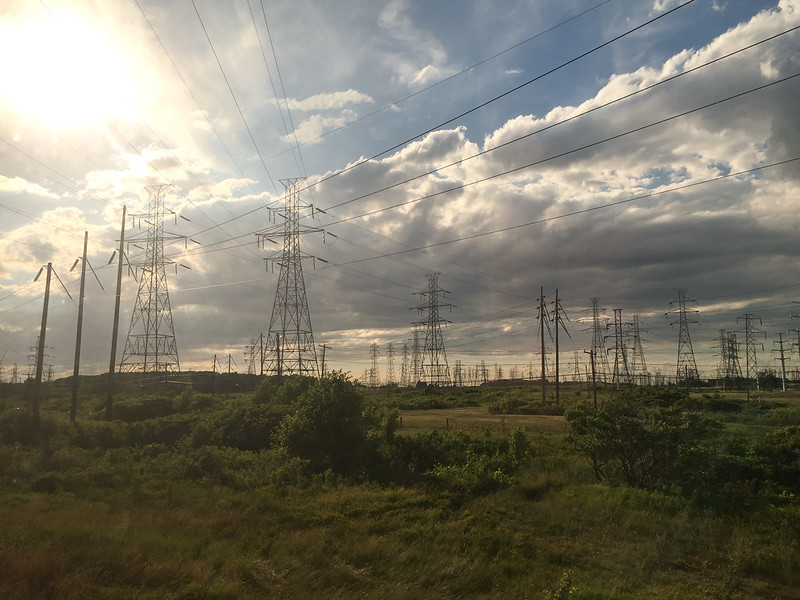TORONTO, ON — Carolyn Kim, Senior Director for Communities and Decarbonization at the Pembina Institute, made the following statement in response to Ontario’s Independent Electricity System Operator’s (IESO) net-zero grid analysis, released today.
“We welcome IESO’s first attempt to analyze how the province can achieve a net-zero emissions electricity grid – a goal that Canada as a whole has committed to achieving by 2035, along with other nations such as the U.S., U.K., and Germany.”
“While these analyses are an encouraging effort to support informed dialogue on significantly reducing emissions from electricity production in Ontario, they fall short by underestimating the reliability of diverse clean energy portfolios, as well as the rapid decline in costs of renewable power – while overestimating the competitiveness of natural gas in the long-term. We strongly caution against new gas investments that will be incompatible with forthcoming Clean Electricity Regulations in 2035, with the costs for these stranded assets likely to be loaded on to ratepayers and taxpayers in the province.”
“In light of today’s report, we are concerned that Ontario is at risk of not meeting its own 2030 climate target for its electricity sector. While Ontarians can be proud of the relatively high share of clean energy already powering their grid, emissions have been steadily growing in recent years – and the scenarios outlined in this IESO report indicate that the province is now on track to far exceed its 2030 emissions reduction target for electricity production. Further, while today’s report examined a pathway to removing emissions from Ontario’s electricity system by 2050, Ontario’s grid must be net-zero by 2035 to align with Canada’s climate commitments.”
“Finally, we note that the costs outlined in today’s report cover significant expansion of the grid – which Ontario must urgently undertake to support its growing clean economy – as well as measures to decarbonize the grid. While there are necessary capital costs associated with the transformation and expansion of Ontario’s grid, we know that a portfolio of clean energy solutions – including renewables, as well as battery and pumped storage – can provide the reliable, affordable electricity that Ontarians need, while shielding consumers from the volatility of natural gas prices. Meanwhile, the scenarios put forward by IESO today – which include growing gas on the grid – represent a 20 per cent to 30 per cent increase on current electricity rates for consumers. We are concerned, therefore, that Ontarians are missing out on some of the cleanest, cheapest forms of electricity.”
“We welcome the opportunity to work with IESO on future versions of this modelling, into which we hope we can incorporate useful cost and benefit comparisons. This will be crucial to arming the Government of Ontario with the right information to make informed decisions about the future of electricity generation in the province. Ontario has an opportunity here to build on its previous successes of embracing cleaner technology to power its grid. In doing so, it will build a stronger economic future for all Ontarians.”
Contact
Alex Burton
Communications Manager, Pembina Institute
825-994-2558
Quick Facts
- According to the Canada Energy Regulator’s Canada Energy Futures 2021 Report, under current policies, Ontario is set to become the second largest generator of electricity from gas power plants. Gas generation in the province is expected to increase 51 per cent over 2019 levels by 2035, or 5,904 GWh.
- Ontario’s grid is 91 per cent clean, according to IESO, but meeting rising demand for electricity with natural gas would increase grid emissions by 260 per cent by 2040 (according to this report from TAF).
- According to Canada’s 2022 National Inventory Report, electricity emissions in Ontario grew 43 per cent between 2017 and 2020. They are forecasted to grow by another 316 per cent by 2028 (according to the IESO 2022 Outlook). Such a large increase will compromise Ontario’s ability to meet its 2030 emission target.
- Natural gas price increases have driven up the wholesale, or commodity, electricity cost in Ontario by three times compared to the 2020 average. Electricity grids in Canada reliant on gas-fired generation already see higher costs than those with more clean energy sources.
- Investment in renewables in Ontario is falling behind Alberta. Since 2016, only 1.3 GW of wind and solar generation capacity have been built in Ontario, compared to 3.2 GW in Alberta – meaning almost two-and-a-half times more renewable capacity has been added in Alberta.
Background
Report: Achieving a Net-Zero Canadian Electricity Grid by 2035: Principles, benefits, pathways
Report: Pembina Institute response to AESO Net-Zero Emissions Pathways Report
Report: Pembina Institute response to the proposed frame for the Clean Electricity Regulations
Blog: The U.S. Inflation Reduction Act takes a big step towards a clean grid. Can Canada keep up?




